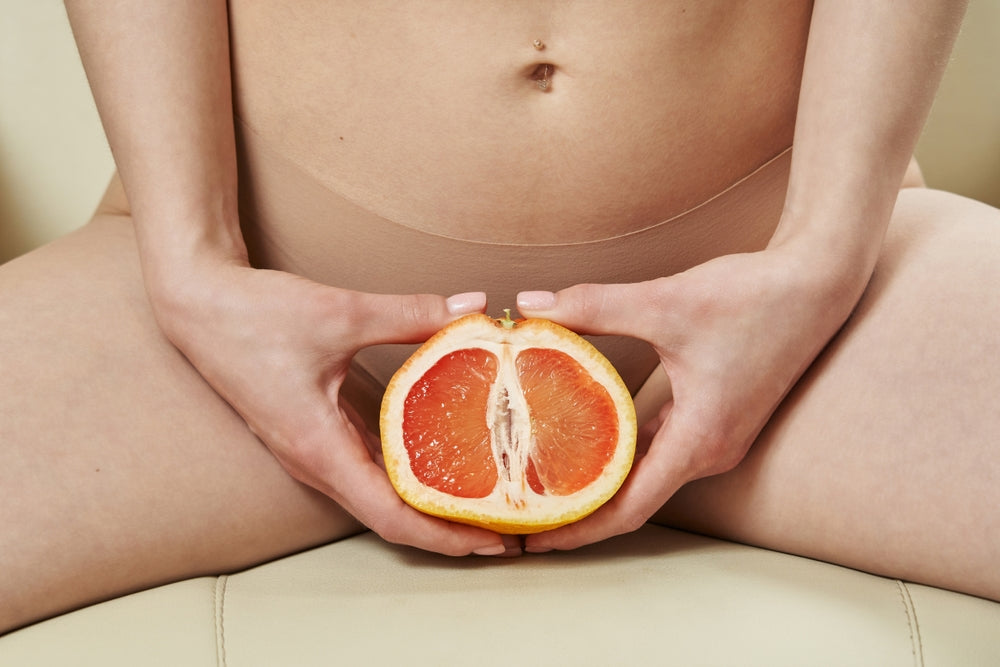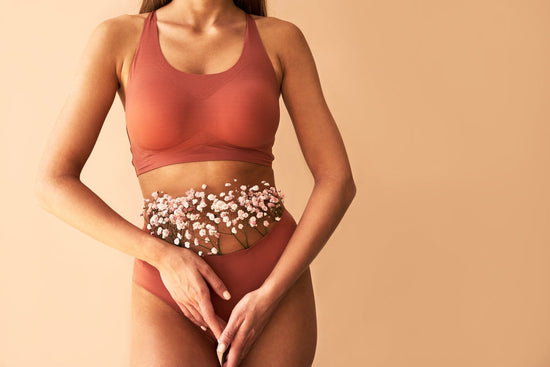Vulva, vagina, vagina... there are so many terms for our Punani that all mean the same thing, right? Wrong. In fact, these terms do not all have the same meaning and stand for something different. We know that many people are not aware of this and today we will explain to you what the terms that surround the female intimate area circulating.
Vagina and vulva - where do the terms come from?
Let's start with the basics. Where do the words vulva and vagina actually come from?
Vagina comes from Latin and can be translated as 'sword, sword sheath, cover'. It essentially means the container for a blade.
In 1549, the word “vagina” was introduced into medicine by Matteo Realdo Colombo, an Italian anatomist and surgeon.
The term “vulva” is more difficult. The origin of the word cannot be explained exactly. Originally, the Latin word volva however, refers to the uterus.
Find the right Taynie for you.Discover our diversity!
Vulva and vagina - the difference
We have to admit that the two terms vulva and vagina are very similar. However, they do not refer to the same thing - there are differences here. We therefore say: stop the confusion and it's time for some education.
The term “vulva” includes all external genitalia of the female intimate area. That is, exactly what you can see from the outside. This includes the inner and outer labia, the clitoris, the vestibule of the vagina and the mons pubis.
And then we have the internal female sexual organs , which include the vagina, i.e. the entrance to the vagina, the uterus, the fallopian tubes and ovaries, which are responsible for menstruation, among other things. You can use the terms vagina and vagina interchangeably, because vagina is just the Latin term here.
The vagina: its anatomy and function
First things first: The vagina is a tubular organ that leads from the vulva to the uterus. Together with the ovaries and fallopian tubes, the vagina and uterus ultimately form the internal female sexual organs.
How long is the vagina to the cervix?
The length of the vagina can vary from person to person. It is generally said that the length of the vagina is about 8 to 10 cm amounts.
And in case you didn’t know: The cervix changes depending on the phase of your cycle . As ovulation approaches, it becomes softer and its position changes - it is then higher. Do you want to learn more about ovulation? Then be sure to read our Blog post During your period, however, the cervix is lower again.
pH value of the vagina
So-called Döderlein bacteria are found in the mucous membrane of the vagina. Perhaps the terms “Lactic acid bacteria” or “lactobacilli” rather something. They are responsible for the production of lactic acid, without which the acidic pH the vagina could not be maintained. The vagina should always have a low pH value of around 3.8 to 4.5 to avoid infections. If the pH value is out of balance, pathogenic germs can quickly multiply in the vagina. The result can then be, for example, a vaginal yeast infection.
Do you often feel that your vaginal flora is disturbed? Then read our Blog post with tips for an intact vaginal flora.
It is best to keep disposable period products away from your vagina. Disposable pads or tampons often contain harmful Chemicals , which therefore immediately come into contact with your mucous membranes. You can find out what biocides can do in our Blog post in addition.
We recommend our Period underwear or washable tampons or Bind . Is your period heavy? Then our ultra collection just the right thing for you. For the end of your period, the products of our Daily Collection particularly good. Our products do not contain any substances that are harmful to health and they are also sustainable.
Function and anatomy of the vulva
The mons pubis and the outer labia enclose the center of the vulva - that is, the inner labia, the vaginal vestibule and the clitoris. They provide protection through their fat pads. Most of the vulva is covered with skin, only the vestibule and the vagina are covered with mucous membrane.
Anatomy of the vulva
We have already explained to you what the vulva consists of. Let us now go into it in more detail.
mons pubis
The mons pubis, also called the pubic mound, is the light Survey above the female pubic bone. It is made of fatty tissue and begins where the outer labia meet. It is also the area where pubic hair grows.
Labia
The outer labia are two folds of skin that run down to the perineum and begin under the mons pubis.The inner labia surround the vestibule of the vagina and meet at the clitoris. The inner labia are either covered by the outer ones, or they are visible from the outside. The vulva can look different for each person - every vulva is unique and one of a kind.
clitoris
The clitoris is an organ that Cavernous tissue is formed. In addition to humans, other mammals also have a clitoris. The clitoris consists of two clitoral legs, two erectile bodies and the clitoral shaft with the clitoral glans. The clitoral legs are about 6 to 9 cm long and reach into the pelvis. The clitoral legs, on the other hand, lie partly on the front wall of the vagina and surround the vestibule of the vagina. The clitoral glans is either located behind a fold or it is free and visible.
Vaginal vestibule
The term “vaginal vestibule” has been mentioned a few times now and you may be wondering what it actually is. It is a small slit-shaped space between the inner labia. The vaginal entrance and the urethral opening are located in the vaginal vestibule.
What is the function of the vulva?
Like every part of the body, the vulva has a specific function. Among other things, it ensures that pleasure is increased during sexual intercourse. The clitoris, also known as the “clitoris”, is particularly involved in this. What many people don’t know: the clitoris is very similar to a penis, both externally and in its function. Due to its incredible approx. 8000 nerve endings it reacts very sensitively to touch. The glans of the penis has only a few hundred nerve endings in comparison - so we are definitely way ahead there. This also makes the clitoris 50 times more sensitive than the glans. The clitoris also has erectile tissue that fills with blood when sexually aroused, making the clitoris stiff and larger. However, only a small part of the clitoris is visible to us; the majority is located inside the pelvis.
Also important to know: Not only the clitoris has a large network of nerves and erectile tissue, but also the inner labia and the vestibule of the vagina. Feeling of pleasure Fluid comes out of the Bartholin glands (vaginal vestibular glands). This moistens the vaginal entrance and makes it easier to insert the penis into the vagina.





